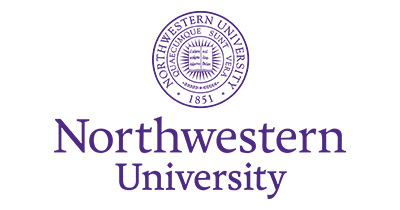My spring-quarter 2016 poetry translation seminar brought together the most varied group of students and languages I have had in many years of teaching the course. (The reading list, etc., is in the March 1 post, below.) I thought that last year’s 2015 group, which included two speakers of Icelandic (!)–we ended up translating a poem by Stefán Hörður Grímsson–the first time this language had ever been available to the course. This year in the course there were native speakers of Spanish, Greek, Korean, and Thai, and we did poems by the neglected Venezuelan poet Rafael José Muñoz, the very active and esteemed Greek poet Kiki Dimoula, and the South Korean poet Kim Chi Ha–the poet Muriel Rukeyser tried to visit when he was imprisoned as a dissident, decades ago. We even looked at a Chinese T’ang Dynasty poem and a contemporary Thai poet, Somying, in addition. And we read a mix of essays critical, practical and theoretical on translation. The extraordinary range of the paper topics of the students (names in parentheses after each summary), will show how much we were able to at least map out for ourselves and *use* in our brief 10-week quarter:
~~ A consideration of how Fernando Pessoa’s heteronymic poetry presents special problems for a translator, who must decide how to regard each of this poet’s alter-poets in terms of both language and poetics, on the one hand, and in terms of psychic relationship to Pessoa himself, a tremendously elusive mind and spirit, which his poem “Autopsicografia,” published under his own name, exemplifies. (Noam Shentov)
~~A critique of two different English-language translations of one of Rainer Maria Rilke’s French poems, “Les Fenêtres,” looking especially at the kinds of French-to-English issues implied by the reverse process, English-to-French, that have been analyzed by Yves Bonnefoy, and also pondering how far a source text can be “adapted” rather than followed more closely before it becomes simply a new poem in the target language. (Leah Kimball)
~~How the necessity of translating Rafael José Muñoz’s neologisms opens up an interesting problem: Should the translator’s English-language neologism reflect *how* Muñoz created his Spanish-language coinage? And what does the translation of neologisms reveal about poetic translation more generally? (José Delpino)
~~The complicated and rich process of decolonizing the mind (to quote Ngũgĩ wa Thiong’o) arises again in translating the poems of Congolese poet Kama Kamanda’s “Pays d’espoir,” which is written in the colonizing language, French. How should the translator approach the use of the target language, English, in such a case? (Rachel Girty)
~~What might be in the elusive in-between linguistic space suggested by Walter Benjamin’s “The Task of the Translator”–the space between the original poem and its translation, the space that at least conceptually and paradoxically might overlap a little with Benjamin’s idealized total language that consists of all the expressivity of all languages together? If what’s there cannot be known to us, and therefore can’t be expressed, could it be at least suggested by some sort of translation making use of interlinear typographical spaces and multiple translations of the same poem? (Katharine Cavanaugh)
~~How does the translator try to solve the problems of the missing cultural context of a translated poem? (We read Kwame Anthony Appiah’s essay on “Thick Translation” and Michael Riffaterre’s essay on “intertexts” and “presuppositions.” Test case: the Korean poem “Azaleas” by Kim Sowol (1902-1934). (HyoJin Park)
~~How does one approach translating the most Afro-Cuban-inflected poems of Nicolás Guillén in such a way as to incorporate into the process and the translation itself the strong decolonizing dimension of this poet’s work? To what extent, and how, can the target language, English, get hold of these dimensions of the original poem in Spanish? “Presuppositions” and “thick translation” at issue, again. (Alison Stenclik)
~~And yet again, problems of “thick translation” and “presuppositions” arise, this time in an unusual and fascinating way, as the focus of thinking about how might one translate a poem into video, providing on screen both the original text and a translation, while the visual imagery addresses historical, cultural and literary context. The result: a video translation of a poem (English title: “Soon”) by the Thai poet Somying. (Urasa Burapacheep)
~~A critique of Robert Bly’s translation of “Vuelta de paseo” by Federico García Lorca, as “Home from a Walk,” with particular attention to connotations of the Spanish words and the phonetic texture of Lorca’s lines. (Sam van Loon)
~~An unearthing of the Tantric and Buddhist imagery and concepts in Octavio Paz’s poem “Blanco,” and a critique of existing English-language translations as being insufficiently attuned to the importance, indeed the centrality, of these images and concepts in their translations. (Miranda Smith)
~~A critique of an existing translation of the poem “Holy Thursday” by Kiki Dimoula–again, on the basis of an insufficient awareness of the connotations of words–presuppositions and thick translation, once more. (Eleni Dima)
~~Almost everyone made use of Vermeer’s essay on the translator’s “commission” or (as he calls it, using a technical term of his own invention,” the “skopos.” That is, so much depends on the translator’s sense of why, for what purpose, s/he is translating a particular text. There are so many different literary purposes for translation, especially. Another case study: what happens if one wants to translate the *form* of a T’ang Dynasty poem?–specifically, Li Bai’s “Song You Ren”–into English? (Maximillian Rowe)

